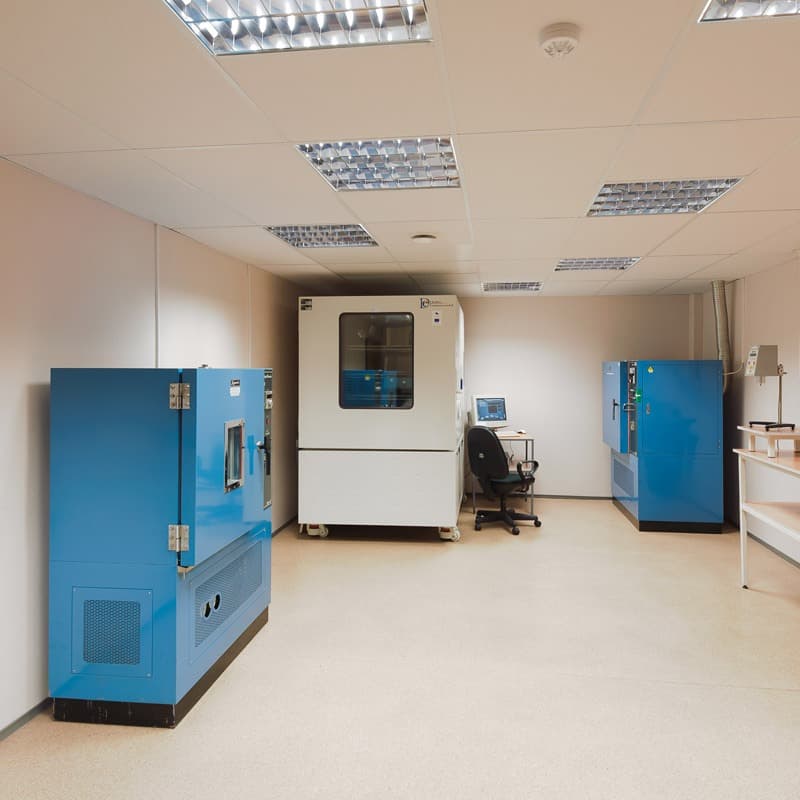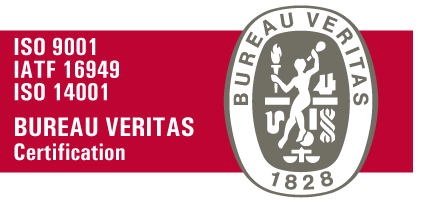Our policy –
Quality.
Mistra is committed to the O-defect principle and the continuous improvement of products and processes. It is our goal to achieve customer satisfaction through excellent quality and reliability of all products. We apply multi-level quality control (including product and process monitoring and in-house laboratory) to detect and prevent quality problems and ensure premium quality to our customer.
Mistra’s quality system is certified according to the automotive standard IATF 16949. We also hold several accreditations from our customers, e.g. Ford Q1 and Volkswagen A-Rating, also Volvo Cars Quality Excellence Award and Adient Supplier Performance Award.
ISO 14001 Certificate
(PDF)
IATF 16949 Certificate
(PDF)
Environment
Mistra’s production and process development is set up in an environmentally responsible manner. We aim at minimizing the environmental impact of our activities through efficient use of materials and optimization of processes, while maintaining the quality and reliability of our products.
Mistra’s environmental management system is certified according to ISO 14001 requirements.
Material Lab
Mistra laboratory
Mistra’s in-house laboratory is specialised in automotive carpet and part testing and contains a wide range of equipment, including 3D measuring machine Carl Zeiss Accura and Climate test chamber.Mistra’s environmental management system is certified according to ISO 14001 requirements.

| Laboratory Equipment | Tests | Standards |
|---|---|---|
| 1. Electronic balances | Weight per unit area, g/m² | ISO 9073-1 ISO 8543 ISO 2286-2 DIN EN 12127 |
| 2. Thickness gauge (range 0 – 10 mm) | Thickness, mm | ISO 5084 ISO 2286-3 ISO 1765 |
| 3. Tensile testing machine (range 0 – 5 kN) TENSOMETER T2000 | 1.Tensile strength and ultimate elongation, N/% | ISO 9073-3 ISO 13934-1 |
| 2. Tear strength, N | ISO 9073-4 ISO 13937-2 DIN 53 356 | |
| 3. Interlaminate strength / Adhesion, N | DIN 53 357-A PV 2034 (VW) | |
| 4. Stiffness, N | STD 3805 | |
| 4. Taber Abrasion Tester | 1. Surface resistance to abrasion, loss of weight, g | ISO 5470-1 SAE J1530 |
| 5. Schopper Type Abrasion Tester | 1. Surface resistance to abrasion, loss of weight, g | PV 3908 (VW) DIN 53863, Part 2 GME 60345 |
| 2. Colour fastness against abrasion, grade of grey scale | ||
| 6. Electronic crockmeter/ Rubbing fastness tester | Colour resistance to dry or wet rubbing, grade of grey scale | ISO 105-X12 ISO 105-A03 |
| 7. Laboratory oven (range 0°C – +300°C) | 1. Heat shrinkage after exposure to heat, % | ISO/PAS 17984 |
| 2. Thermal stability, visible | ||
| 3. Resistance to heat aging, visible or tensile strength | ||
| 4. Colour change, visible/Minolta | ||
| 5.Odour | PV 3900 (VW) VDA 270 | |
| 8. Climatic test chamber (range -30°C – +180°C, RH 0-95%) | 1. Heat shrinkage after exposure to heat and/ or RH%, % | ISO/PAS 17984 |
| 2. Thermal stability, visible | ||
| 3. Resistance to heat aging | ||
| 4. Colour change | ||
| 5. Climatic tests (plus-minus) | ISO 139 | |
| 9. Dimension stability after immersion in water | ISO/PAS 17984 | |
| 10. MVSS horizontal flammability tester | Burn rate, mm/ min | ISO 3795 FMSS 302 VCS 5031,19 SAE J369 |
| 11. Wira tuft withdrawal tensometer | Tuft retention property | ISO 4919 |
| 12. Twist tester electronic | Yarn count | ISO 2060 |
| Yarn twist | ISO 2061 | |
| 13. pH-meter | pH of latex | ISO 976 |
| 14. Brookfield digital viscometer | Viscosity of latex | ISO 1652 |
| 15. Spectrophotometer CM2600d | Colour measurements | VW 50190 VCS 1026,5289 |
| 16. Heel tester | Heel abrasion | PV 3934 (VW) |
| 17. Coordinate Measuring Machine Carl Zeiss Accura II Aktiv | Measurement area: 1200 / 2400 / 1000 |
For tests and standards not in the list – ask for a quotation info@mistra.ee



